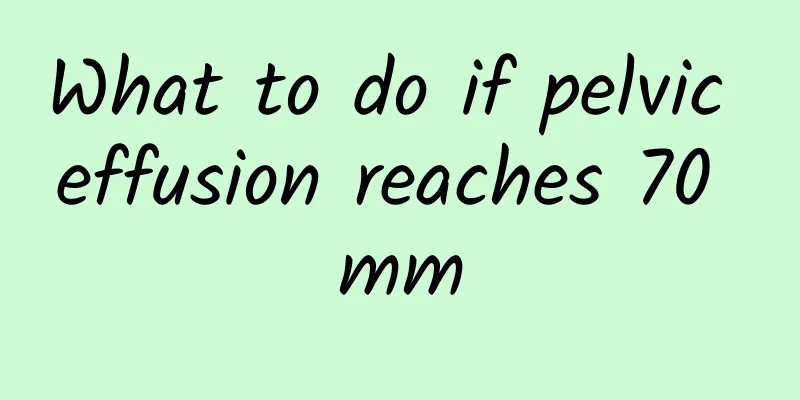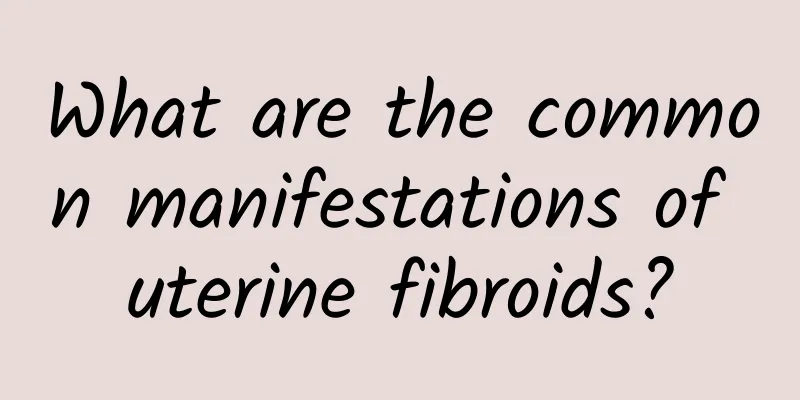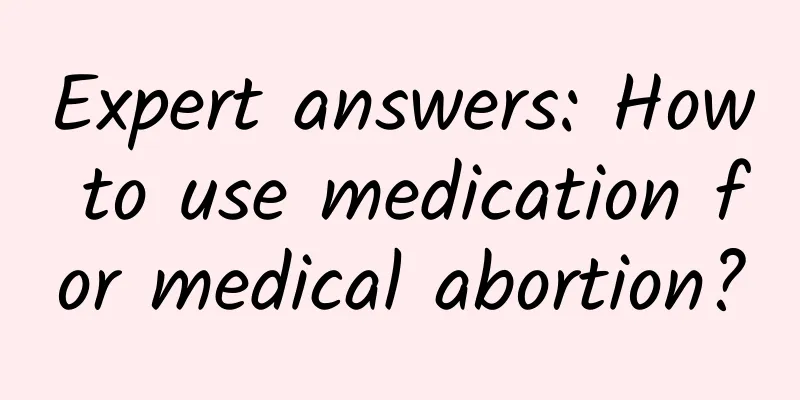What to do if pelvic effusion reaches 70 mm

|
Pelvic effusion is the presence of inflammatory exudate in the pelvis. If the pelvic effusion is less than 10mm, it is physiological pelvic effusion and is considered normal. However, if it exceeds 10mm, it is mostly caused by pathological pelvic effusion and is abnormal, and needs to be treated as soon as possible. So, what should we do if the pelvic effusion reaches 70mm? Pelvic effusion often occurs in the lower part of the pelvic cavity, such as the uterine rectal pouch. B-ultrasound is a commonly used and effective means of examination in gynecology, which can accurately determine the amount of effusion. It can be determined whether it is normal effusion or abnormal effusion by combining medical history, symptoms and physical signs in detail. If it is confirmed to be abnormal effusion, the cause of the effusion must be determined, and removing the cause is the key. Extraction of effusion is a Western medical examination or symptomatic treatment method and should not be performed frequently. Because simply extracting effusion will not only fail to cure pelvic effusion, but will also increase the amount of effusion. Pelvic effusion caused by acute or chronic pelvic inflammatory disease and adnexitis is often accompanied by bilateral or unilateral lower abdominal pain, lumbosacral pain, low back pain, lower abdominal distension and pain, low back pain, etc. In the end, what should we do if the pelvic fluid is 70mm? Here is a summary for you: 1. General treatment of pelvic effusion: relieve patients' mental concerns, enhance their confidence in treatment, increase nutrition, exercise, pay attention to the combination of work and rest, and improve the body's resistance. 2. Physical therapy for pelvic effusion: benign warm stimulation can promote local blood circulation in the pelvis, improve the nutritional status of tissues, and increase metabolism, so as to facilitate the absorption and disappearance of inflammation. Commonly used methods include short wave, ultrashort wave, ion penetration, and various drugs can be added. 3. Surgical treatment of pelvic effusion: Surgery is suitable for lumps such as hydrosalpinx or tubo-ovarian cysts; small infection foci that cause repeated inflammation are also suitable for surgical treatment. The principle of surgery is to effectively cure the disease and avoid the chance of recurrence of residual lesions. Unilateral adnexectomy or hysterectomy plus bilateral adnexectomy should be performed. Ovarian function should be preserved as much as possible for young women. Single therapy for chronic pelvic inflammatory disease is less effective, so comprehensive treatment is appropriate. |
<<: How to prevent recurrence of cervical erosion
>>: What causes vulvar itching?
Recommend
Will women die from ectopic pregnancy?
Ectopic pregnancy refers to pregnancy that occurs...
What are the symptoms of mucinous ovarian cysts? Can they cause infertility?
Can symptoms of mucinous ovarian cysts cause infe...
Why do I feel pain in my lower abdomen after abortion? 4 reasons for the pain in my lower abdomen
If there is only mild pain in the lower abdomen a...
Traditional Chinese medicine has different understandings on the occurrence of vaginitis
Traditional Chinese medicine has different views ...
How should women diagnose cervical erosion? Introducing three steps to scientifically diagnose cervical erosion
The cervix is the channel connecting the outsid...
Paper figures are no longer popular, "micro-muscleism" is in!
Want lines? Must do strength training I remember ...
After exercise, you don’t have to worry about “destroying and growing” your muscles
Many office workers usually sit for long periods ...
Is pelvic peritonitis contagious?
Is pelvic peritonitis contagious? Experts tell us...
90% of Chinese people don’t get enough dietary fiber ~ 3 dietary principles can help you reach the target quickly!
The Chinese people do not consume enough dietary ...
How to effectively treat congenital absence of vagina
Some women have some abnormalities during embryon...
Preventing osteoporosis requires more than just calcium! Nutritionist Hu Ci'en reveals: 3 nutrients to maintain bone health
Among Chinese women aged 65 and above, one in fou...
What are the symptoms of endometritis and pelvic inflammatory disease
If you experience discomfort such as lower abdomi...
What are the dietary taboos for women after abortion? Precautions and dietary taboos after abortion
After an abortion, women must keep their vulva cl...
Does ectopic pregnancy cause breast pain? 6 symptoms may indicate ectopic pregnancy
Although ectopic pregnancy is also a type of preg...
When fasting to lose weight, do you really not eat anything? Nutritionist reveals: 4 secrets of fasting time
4 secrets of fasting time Fasting can improve mod...









